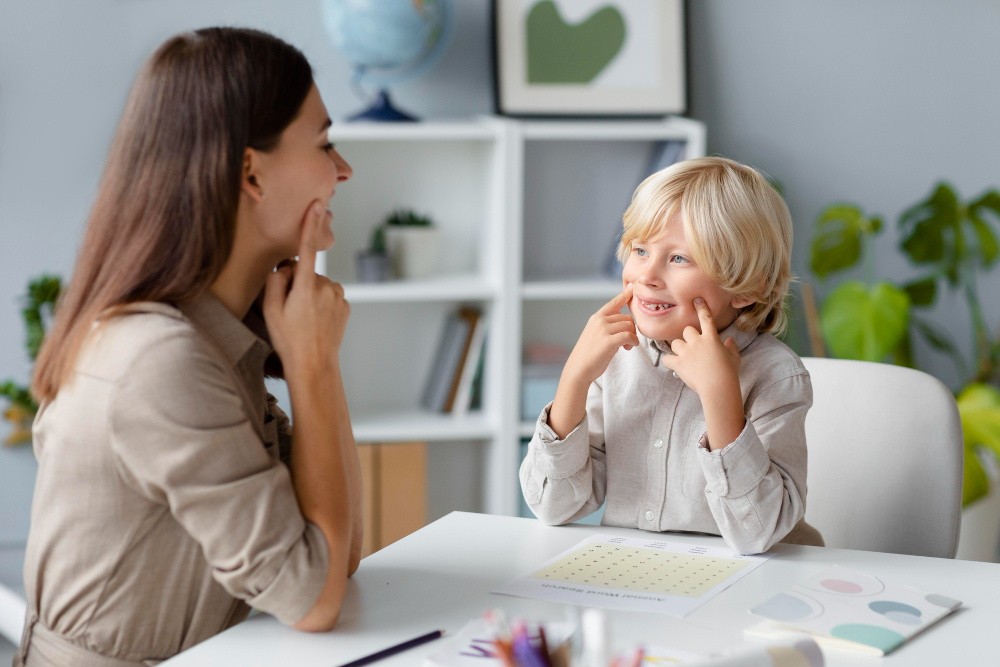How to Support Language Development in Bilingual Children
Effective Strategies for Nurturing Bilingual Language Development in Children
Table of Contents
Introduction to Bilingual Language Development
Bilingualism is becoming increasingly common, with a significant portion of the global population being fluent in more than one language. Parents and educators alike seek effective strategies for supporting language acquisition in bilingual children, interested not only in the practical aspects but also in understanding the complex dynamics of bilingual language development. This article provides a comprehensive guide on nurturing bilingualism from early childhood, highlighting research-backed insights, developmental milestones, and strategies for parents and educators.
Understanding Bilingual Language Development Milestones

What are the milestones of bilingual language development?
Bilingual language development follows a path similar to that of monolingual children, with distinct milestones.
- First Year: Children start with cooing and babbling, experimenting with sounds.
- 12 Months: The first words typically emerge.
- 18 Months: Bilingual children often have a vocabulary spanning 20-100 words and can be understood 25-50% of the time.
- 24 Months: At this stage, they begin to combine two-word phrases, boasting a vocabulary of around 200-300 words.
- Age 3: Expect three-word phrases and a vocabulary of approximately 1,000 words, with intelligibility increasing to 75-100%.
- Age 4: Children use complete sentences and engage in conversations, being understood nearly all the time.
How do these milestones compare with monolingual milestones?
Bilingual children typically reach language milestones within the same developmental timeframes as monolingual peers. Though their vocabulary may be divided across both languages, their combined vocabulary can equal that of monolingual children. This highlights that bilingualism does not hinder language development but can actually enrich it.
Impacts of Bilingualism on Language Development

How does bilingualism affect language development?
Bilingualism positively affects language development by providing children with a rich linguistic environment that enhances their cognitive and social skills. Research shows that bilingual children display normal language acquisition patterns, achieving milestones within the same timeframe as monolinguals.
Initially, while their vocabulary in any single language may appear smaller, solutions lie in looking at their total vocabulary across both languages. This combined vocabulary often matches that of their monolingual peers. Bilingual children develop cognitive advantages, such as improved task-switching and perspective-taking abilities, which result from managing multiple languages. These skills enhance their memory and communication understanding, allowing for better social interactions and academic performance.
Concerns about delays among bilingual children are largely unfounded. They encounter developmental challenges similar to their monolingual counterparts due to the complexities of navigating two languages. In fact, engaging with both languages often leads to better pronunciation and grammar, fostering a well-rounded linguistic proficiency.
Comparison with monolingual peers
Overall, bilingual children often excel academically—frequently outperforming monolingual peers in various areas. While they may initially mix languages, this code-switching reflects their linguistic flexibility rather than confusion, and over time, they learn to differentiate and manage two linguistic systems.
| Area of Comparison | Bilingual Children | Monolingual Peers |
|---|---|---|
| Vocabulary Acquisition | Smaller in each language, total matches peers | Larger in single language |
| Cognitive Skills | Enhanced problem-solving, better multitasking | Standard cognitive abilities |
| Language Milestones | Achieve similar milestones but navigate two systems | Achieve milestones in one language |
| Social Interaction Skills | Increased flexibility and understanding of contexts | Standard interaction capabilities |
By embracing and supporting bilingualism, parents can enrich their child's language development, academic success, and cultural identity.
Approaches for Supporting Bilingual Children

What approaches should be used to support bilingual children?
Supporting bilingual children requires a multifaceted approach that nurtures their unique developmental needs. It starts by creating a welcoming and enriching environment where both languages can thrive.
Nurturing Bilingual Environments:
- Name Pronunciation: Begin by pronouncing the child’s name correctly, reinforcing their identity and connection to both languages.
- Listening Time: Allow for sufficient listening time. This helps the child absorb the language they are learning and reduces anxiety when trying to communicate.
- Visual Aids and Gestures: Incorporate visual aids, gestures, and simplified language to enhance understanding without overwhelming the child during their early stages of bilingualism.
Family Involvement:
- Use of Home Language: Parents should actively use the home language, especially during settling periods, to support comprehension and comfort levels.
- Engagement: Encourage parents to share cultural elements like stories, songs, and food that reinforce the child's connection to their heritage.
- Positive Reinforcement: Praise their communication efforts, and give them ample time to express themselves without pressure. This fosters confidence and motivates language use.
By actively engaging families and nurturing both linguistic environments, parents can greatly enhance their child’s bilingual development.
Strategies for Individual Bilingual Learners

What strategies support the learning and language development of individual bilingual learners?
To effectively support the learning and language development of bilingual learners, it is essential to implement multilingual strategies that draw upon their first language skills. By recognizing and utilizing the knowledge from their home language, educators can enhance these learners' proficiency in English.
Key Strategies Include:
- Translation of Key Terms: Providing translations of essential vocabulary can help bridge gaps in understanding and build a solid vocabulary base in both languages.
- Discussing Meanings: Teachers can engage bilingual students by exploring the meanings of words in both languages, fostering deeper conceptual understanding.
- Using First Languages for Concept Exploration: Allowing students to discuss and express ideas in their first language encourages critical thinking and higher-order cognitive skills.
- Code-Switching and Translanguaging: These practices enable students to fluidly transition between languages, making language learning more relatable and less intimidating.
- Involvement of Bilingual Teaching Assistants: Bilingual aides can provide targeted support, ensuring students grasp complex content and instructions effectively.
- Creating EAL Learner Profiles: Tailoring support through personalized profiles takes into account the unique language backgrounds and needs of individual students, enhancing their learning experience.
Classroom Techniques to Enhance Bilingual Learning
In addition to individual strategies, effective classroom techniques can create an inclusive environment for bilingual learners:
- Language-Rich Environment: Encourage students to interact in both languages regularly, using songs, stories, and discussions that incorporate their home language alongside English.
- Culturally Relevant Activities: Integrate cultural elements tied to students' languages, allowing them to connect personally to the curriculum.
- Visual Aids and Gestures: Utilize visual supports and gestures which can help convey meaning and facilitate comprehension across language differences.
By implementing these strategies and techniques, educators can provide meaningful support for bilingual learners, enhancing their academic success and language acquisition.
Promoting Language Development in Dual Language Learners
How can language development be promoted in dual language learners?
To enhance language development in dual language learners (DLLs), it is important to create early childhood learning environments that embrace both their home language and English. Here are effective strategies:
- Play-Based Learning: Engage DLLs through play-centered projects that reflect their interests, which fosters both social-emotional skills and academic growth.
- Explicit Vocabulary Instruction: Utilize visual aids, gestures, and props during activities to reinforce vocabulary comprehension and retention, making the learning experience more accessible.
- Tailored Support: Implement small-group or one-on-one interactions that provide personalized guidance, allowing educators to focus on individual language needs.
- Metalinguistic Awareness: Facilitate discussions that explore the similarities and differences between the child’s languages, promoting enhanced understanding of language structures and functions.
- Incorporate Cultural Experiences: Embed culturally relevant experiences into the curriculum to build background knowledge, which is fundamental for reading comprehension and language progression.
These strategies together create a robust framework that supports DLLs in their multilingual journey, enriching their overall language acquisition process.
How Language Develops for Bilingual Children
How does language develop for bilingual children?
Language acquisition in bilingual children mirrors the process seen in monolingual children. Initially, they pick up simpler words and structures, gradually moving to more complex language forms as their ability develops. Bilingual children may seem to mix elements from both languages during this phase, which is a normal and expected part of their learning journey. This language mixing often occurs when children lack the vocabulary or structure in one language, showcasing their adaptability and resourcefulness.
Early exposure to multiple languages does not confuse children as once believed. Instead, they demonstrate a remarkable capability to differentiate between languages from a very young age. Over time, as they grow and engage with both languages, they will learn to navigate and eventually separate them more distinctly.
The key component in successfully raising bilingual children lies in the quantity and quality of language exposure. Engaging them in rich language experiences through conversations, stories, songs, and immersing them in cultural contexts can significantly enhance their bilingual development.
Addressing Misconceptions and Challenges of Bilingualism

What are the disadvantages of bilingualism in childhood?
Misconceptions surrounding bilingualism often highlight perceived disadvantages, fueling fears among parents. One common myth is that bilingual children face language confusion, where they might mix languages or find it hard to distinguish between them. However, this code-switching is a natural part of their development and does not indicate confusion.
Additionally, bilingual children may initially take longer to hit certain language milestones. For instance, they might have a smaller vocabulary in each language when compared to monolingual peers. Yet, when combined, their vocabulary can match that of monolinguals, indicating no overall delay in language abilities.
Academically, bilingual children could face challenges in reading and writing if proficiency is uneven between languages, particularly if one language is favored over the other. This often leads to a temporary developmental lag in specific skills but should not be misconstrued as an inherent disadvantage of bilingualism itself.
Socially and emotionally, navigating two cultures might create challenges. Children may feel a sense of dual identity or seek acceptance in both language communities, which can lead to stress or pressure. Furthermore, the risk of losing a home language can affect their cultural ties, self-esteem, and emotional connections with their heritage.
Common myths
| Myth | Reality |
|---|---|
| Bilingualism causes confusion | Code-switching is natural and normal |
| Bilingual children lag behind in language skills | Vocabulary metrics are combined, showing no overall delay |
| They face greater academic challenges | Uneven proficiency can be managed |
| Bilingualism complicates identity | It enriches cultural understanding |
Addressing these concerns with factual insights can help parents support bilingual development positively and effectively.
The Role of Caregivers and Cultural Influences
Caregiver Involvement
Caregivers play a pivotal role in fostering bilingualism in children. Their consistent involvement in a child's language learning process helps create a rich linguistic environment. By engaging in conversations, storytelling, and playing games in both languages, caregivers significantly influence the child's language acquisition and overall cognitive development.
It's essential for caregivers to maintain a balance between the languages spoken. For instance, designated times for each language can help children recognize and separate the languages, creating strong foundations for bilingual proficiency. Moreover, a shared commitment among caregivers towards using the heritage language reinforces cultural ties and bolsters the child's identity.
Cultural Identity in Language Development
Cultural identity intertwines with language development as children who learn a second language (especially a heritage language) often feel a deeper connection to their family and cultural roots. This connection can be beneficial for their self-esteem and promote positive relationships within their immediate community.
Incorporating cultural practices, such as music, traditions, and food associated with the languages spoken, enhances the learning experience. By celebrating cultural heritage, caregivers help children appreciate the significance of their languages and inspire a sense of belonging. As research indicates, this cultural engagement can lead to better academic performance and social skills, further enriching the bilingual experience.
Conclusion: Encouraging Bilingual Development
Supporting bilingual language development in children offers a wealth of cognitive, academic, and cultural benefits. While challenges and misconceptions exist, research refutes many of these myths, underscoring the normalcy of language development milestones regardless of language acquisition techniques. By consciously nurturing linguistic environments, involving family and cultural elements, and employing targeted strategies in educational settings, parents and educators can effectively bolster the bilingual abilities of children, equipping them with the skills necessary for future success and cultural enrichment.
References
- Bilingualism in the Early Years: What the Science Says - PMC
- Bilingual Language Development - The Facts - Toddler Talk
- 5 Ways to Support Your Bilingual Child | Life & Work Connections
- [PDF] Language development in bilingual children
- Bilingual Language Development in Infancy: What Can We Do to ...
- Raising multilingual and bilingual children: options
- Dual Language Development: Double the Benefit | ZERO TO THREE
- Speech and Language Development in Bilingual Children
- How to Promote Language Development in Bilingual Children
- Children learning more than one language
.png)








%20(1).jpg)




.jpg)





.jpg)

.jpg)











